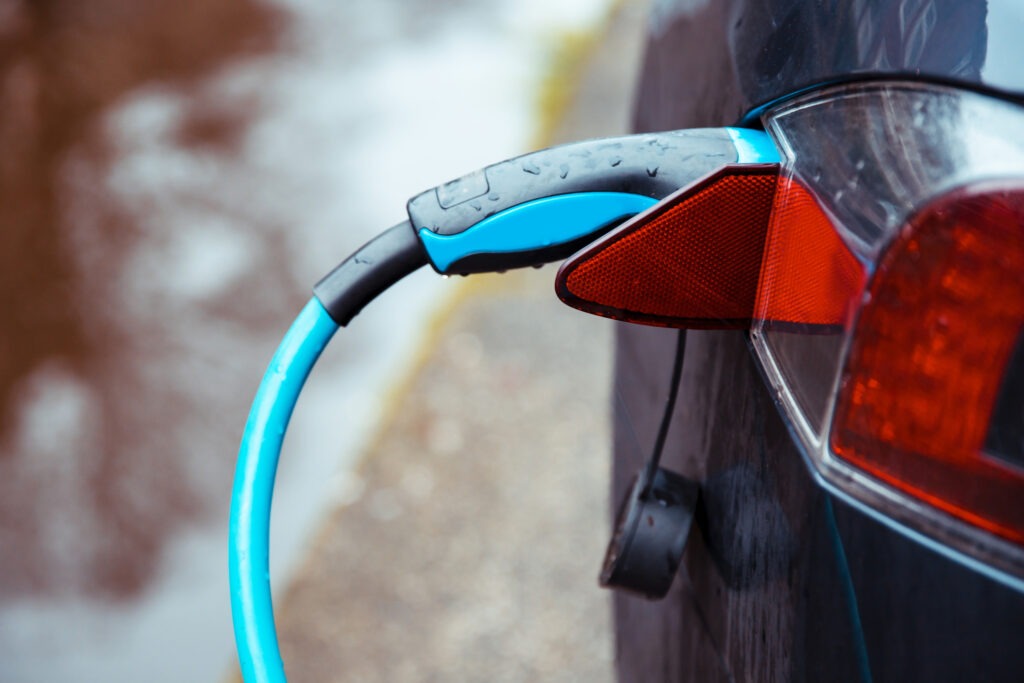July marks new low for Germany’s BEVs in 2024
06 August 2024

The German new-car market endured its third decline of 2024 in July, with battery-electric vehicle (BEV) registration figures almost entirely responsible. Tom Hooker, Autovista24 journalist, examines the latest data.
A total of 238,263 new-cars took to German roads in July, a drop of 2.1% year on year. This slump was largely due to the poor performance of BEVs in the month.
Excluding the powertrain from the Kraftfahrt-Bundesamt (KBA) figures for July this year and last year, gives the market an improvement of 6.6% in July. According to the registrations data, every powertrain posted growth in the month apart from BEVs and the smaller volume ‘others’ category.
From January to July, just under 1.71 million new passenger cars were delivered in Germany, up 4.3% year on year.*
All-electric vehicles have also impacted this result. Without the technology, registrations would have grown 9% in the first seven months of 2024. Every other powertrain increased volumes in this period, apart from the smaller volume ‘others’ category.
The German new-car market could be bracing for a steeper decline in August. Last year, deliveries in the month surged 37.7%, fuelled by BEV registrations, which rose 170% and outperformed the market-leading petrol segment. This was caused by fleets rushing to take advantage of business BEV incentives before they ended at the start of September.
Brutal BEV result
BEVs recorded 30,762 registrations in July, falling 36.8% compared to one year ago. This is the worst delivery drop of any powertrain so far in 2024 and is the technology’s sixth consecutive monthly decline.
Furthermore, all-electric vehicles are responsible for the next two biggest monthly drops in 2024, with numbers in May down 30.5%, and volumes in March down 28.9%.
This caused the BEV market share to slump 7.1 percentage points (pp), sitting at 12.9% in July. This was the worst year-on-year share decline of 2024 so far across all powertrains.
Excluding electric vehicle (EV) results that combine BEV and plug-in hybrid (PHEV) units, the next two biggest share drops also occurred for BEVs alone in the previous two months.
According to Autovista24 calculations, BEV registrations were down 20.1% in the year to date, with 214,887 units. This meant the technology accounted for just 12.6% of all deliveries from January to July, some distance behind its 16.4% share during the same period in 2023.
A skewed comparison
However, the comparison between 2024 BEV figures and last year's results is skewed somewhat. There was a unique market situation in 2023, with buyers making use of business and private incentives for the technology while they were still available.
For example, apart from a decline in January 2023, the BEV market grew exponentially last year until the removal of business subsidies in September. As well as the month prior, strong growth was also seen in May (up 46.6%), June (up 64.4%) and July (up 68.9%). This lines up with BEV struggles in these three months in 2024.
When compared with 2022, BEV deliveries over the first seven months of the year were up 9.6%. Although 2024 has been particularly poor for the technology, this could mean that it is just the BEV market returning to a normal state. The following months could be more telling on how the powertrain is truly performing this year.
Weak order intake
‘BEV order intake from private customers is currently extremely weak. Therefore, we do not see any signals that the situation with registrations is changing,’ commented German Central Association for Motor Trades (ZDK) vice president Thomas Peckruhn.
‘This is also confirmed by the results of our survey of car dealerships from the beginning of June, in which 91% of respondents rated the ordering situation for BEVs from private customers as "very bad" (63%) or "bad" (28%) in the further course of the year. The situation is somewhat better for commercial customers, as many companies want to achieve their sustainability goals in this way,’ Peckruhn explained.
Moreover, the introduction of provisional tariffs on BEVs made in China may affect future demand.
‘If BEVs become significantly more expensive in the future due to the introduction of additional tariffs [and the potential for these to be included in list prices], this will mean another step backwards. The desire for affordable electric mobility in Germany and the federal government's goal of 15 million BEVs by 2030 will then become unachievable,’ stated International Association of Motor Vehicle Manufacturers (VDIK) president Michael Lohscheller.
A lacklustre 2024 for the technology may be the main cause of increased CO2 emissions for new passenger cars. Last month saw the highest year-on-year CO2 emissions growth, with figures up 7%. This corresponds with the period when BEVs endured their worst performance of the year.
This followed a 1.9% rise in emissions in the first half of 2024. Additionally, June and May saw the next biggest emissions increases, when BEVs suffered their second and third worst share drops of the year.
Hybrid positivity
Hybrids, including full and mild-hybrid models, had a positive July. The powertrain reached 65,059 registrations, up 22.4% compared to 12 months ago. Without this result, the overall new-car market would have dropped 8.9%
This strong performance gave hybrids a market share of 27.3% in July, a significant improvement of 5.5pp compared to the same period in 2023. This is the technology’s biggest monthly share of 2024 so far, and the highest year-on-year gain across all powertrains.
Hybrids were the best-performing powertrain in the year to date. With 429,025 deliveries from January to July, the technology achieved a 13.7% improvement on the same period in 2023. This meant its market share rose to 25.1% in the first seven months of the year, up from 23%, according to Autovista24 calculations.
Clearly, the technology is finding a bigger foothold in the new-car market from increasing volumes, as well as BEVs decline.
Pleasant PHEV performance
PHEVs had a pleasant performance in July. Deliveries were up 3.2%, thanks to 14,811 units. The technology saw its share grow 0.3pp in the month, to 6.2%.
In the year to date, the powertrain reached 104,360 registrations. This equated to a rise of 11.7% compared to the same period one year ago, according to Autovista24 calculations.
However, PHEV volume comparison has been skewed this year by a strong January, which was set against a poor result for the month last year. This was caused by the removal of incentives for PHEVs at the end of 2022.
From January to July, PHEVs accounted for 6.1% of deliveries, compared to 5.7% during the first seven months of 2023.
EV figures fall
Despite PHEVs strong 2024 so far, the technology could not stop overall EV figures from falling. Plug-in registrations slumped 27.7% in July, the biggest monthly decline for the technology so far this year. This meant its share sat at 19.1% in the month, a significant distance from its 25.9% market hold one year ago.
July compounded an already poor year-to-date performance, with deliveries down 11.9% in the first seven months. Its share between January and July also dropped, declining 3.4pp to 18.7%, according to Autovista24 calculations.
Adding hybrids to the EV share, electrified powertrains took 46.4% of the market in July, dropping 1.4pp compared to 12 months ago. From January to July, the category captured 43.8% of the new-car market, down from 45.1% during the same period of 2023.
Delight for diesel
On the other hand, diesel has had a delightful 2024 so far, outperforming petrol in both monthly and year-to-date delivery growth. The powertrain reached 43,107 units in July, rising 1.4% compared to 12 months ago.
In the first seven months of the year, diesel volumes were up 7.9% compared to the same period in 2023, with 318,459 deliveries. The powertrain has stayed consistent throughout 2024, recording only one decline in March.
The powertrain’s share grew to 18.1% in July, an improvement of 0.6pp year on year. Looking at its share from January to July, this was up 0.6pp to 18.6%.
Petrol stability
New petrol models had a stable July, with 83,405 registrations. This was an increase of 0.1% from 12 months ago, equivalent to 47 extra units. In the year to date, the powertrain posted 633,983 deliveries, growing 6.4% year on year.
Despite hybrids gaining ground, petrol still comfortably remained the most popular choice for buyers. It accounted for 35% of registrations in the month, up from 34.3% in July 2023.
Yet, this was petrol’s lowest monthly share of the year so far. In the first seven months of the year, its hold on the market increased by 0.8pp to 37.1%.
Mixed results for ICE
Combing petrol and diesel deliveries, internal-combustion engines (ICE) saw registrations rise 0.5% in July. Although this was a small volume increase, its market share improved by 1.4pp year on year to 53.1%. Yet, this was the lowest monthly share of 2024 so far for ICE.
From January to July, volumes increased by 6.9%. This meant its share grew to 55.7%, up 1.4pp compared to the same period one year ago.
Consisting of natural gas and liquid-petroleum gas, the ‘others’ category saw deliveries slump 10% in July, with 1,081 units. The category was down 1.3% across the first seven months of the year, recording 9,062 registrations. Its market share dropped in July to 0.3% (down 0.2pp), while recording growth in the year-to-date to 0.6% (up 0.1pp).
*Year-to-date figures have been corrected since publication.



